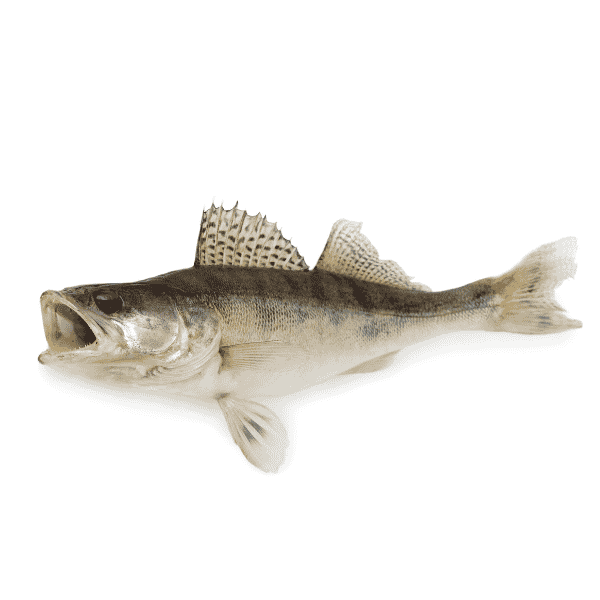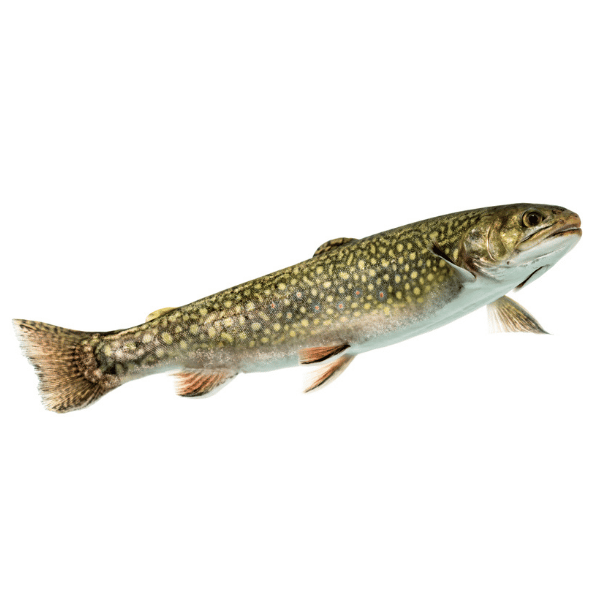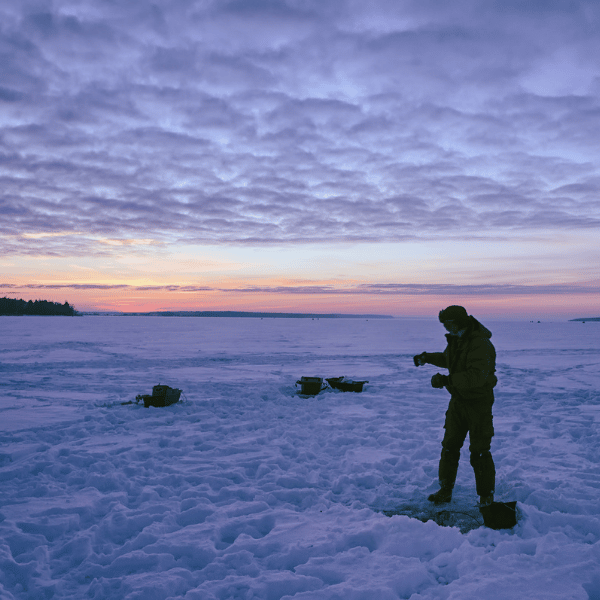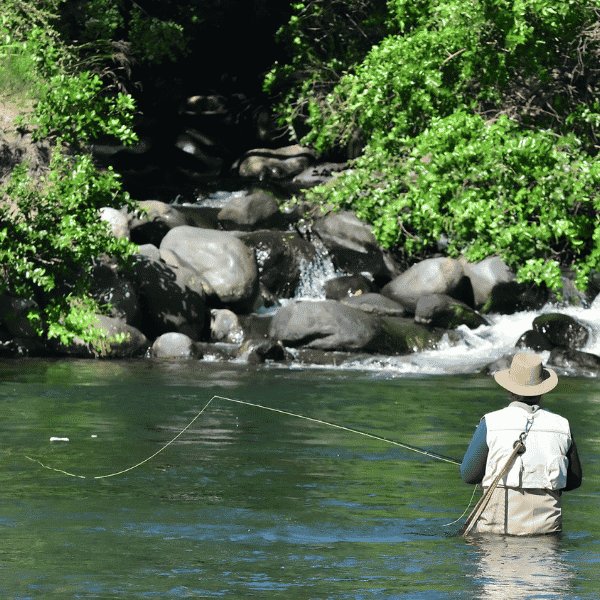Beginner Guide to Fly Fishing for Carp
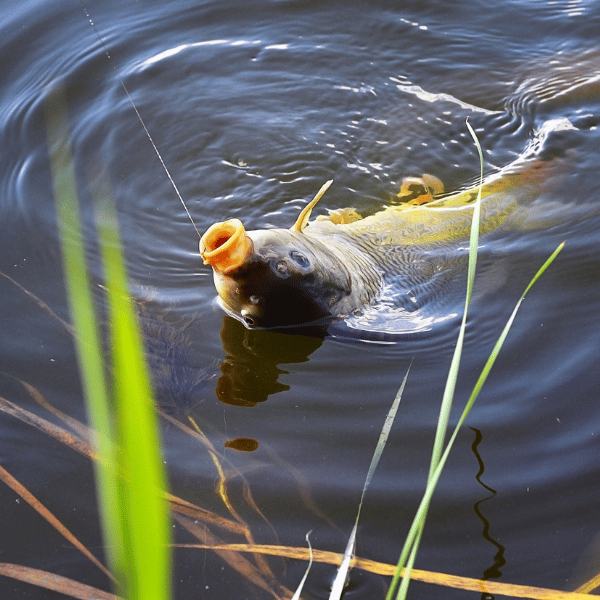
This guide to fly fishing for carp for beginners will cover everything you need to know to catch one of the most fun fish to catch putting up the biggest fight.
This is a complete beginner guide to fly fishing for carp including:
- Gear to fly fish for carp
- Fly fishing for carp in rivers, ponds, and lakes
- Fly fishing for carp in the fall
- Fly fishing for carp in the winter
- Fly fishing for carp in muddy waters
Contents
Carp Fly Fishing Gear

The first thing you’ll need is a complete carp fly fishing setup.
Start by looking out or purchasing a rod that will give you the advantage when pursuing the carp. Fiberglass rods have become more popular in the carp fly fishing world as they have a slower action with more bend and shock absorption so you can more easily control the fish.
Carp are very powerful and you want a reel on your rod that will give you as much stopping power as you can manage. Choose a rod that has a sealed drag system if you’re fishing in dirty water and for all other types of fishing, pick up a reel that has a one-way clutch and won’t be too reflective.
The goal when catching carp is to get the fly in front of the fish without it spooking and disappearing into the wilderness. To accomplish this goal, you’ll want a fly line with a slight taper. When balanced with the larger flies used during carp fly fishing, the lighter line will allow for an even more delicate presentation. Be sure to choose your line in natural or light colors as well that won’t stand out when dropped in the water.
Flies used when fly fishing for carp is designed to mimic the natural food sources present in the area. Each area and type of carp is different and finding the “perfect” fly for your fishing area may take some trial and error. There are a few generic ones that you can try including ones that mimic the movements and image of a crawfish, imitate a worm stuck on something, or one that will slightly blend in with the sandy floor.
Once you’ve got all of the tools of the trade gathered and prepped, you’re ready to head out on your next fly fishing trip!
Fly Fishing for Carp in Rivers
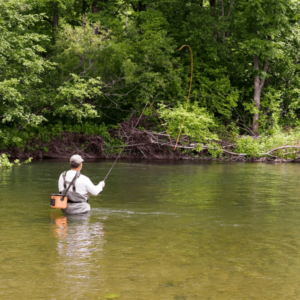
There are a lot of similarities when it comes to fishing for carp in rivers, streams, creeks, lakes, and other bodies of water. But fishing for carp in rivers takes a little bit of a different tactic than in these other areas.
Carp love to be in areas of water that are shallow and offer plenty of cover and food. You’ll find the best places to fish for carp in rivers along river arms or shallower branches of the main waterway. Since fly fishing for carp involves throwing your fly over them and offering up a chance at the bait, once you’ve located the area you want to fish, take time to explore and discover where they’re hiding!
The best time to fly fish for carp in rivers is in the hot days of July and August. As carp like to lie in the shallow waterways, the intense sun warms the water and they stay in one place to feed and warm up after the winter season.
Along rivers and streams, carp gather around branches and overhangs where food will be plentiful. Start by exploring the entire area and attempt to find these fish so you can cast your fly over them. Carp require stalking and once you’ve located where they’re hiding, you can more accurately cast your fly to tempt them into taking a nibble.
Fly Fishing for Carp in Ponds
Some of the most common types of carp that like to lurk in ponds are grass carp and they are easily spooked! Since ponds tend to have muddy waters, the carp feel secure lying in the water where it can be hard to spot them. Before you even start casting for these sneaky creatures, you’ll want to do some surveillance.
If the pond you’ve chosen to fish has murky waters that make it hard to see, you might need to get up extra early to spot the carp swimming below the surface. The waters of most ponds aren’t muddy early in the morning allowing you to see where the fish are hiding.
Look again for any overhanging branches or reeds and hidden areas where carp might be lurking. Once you know where the fish will be, you can target each cast of your rod and reel for better chances of success.
Since carp are easily spooked and can hide very well, take precautions and be careful as you approach your chosen pond. Tread carefully and cast lightly and you may end up pulling up a big carp on your next fly fishing expedition.
Fly Fishing for Carp in Lakes
While ponds tend to be shallow, with plenty of covers for carp to hide behind, lakes are often larger, deeper, and can prove to be a challenge when it comes to catching carp.
Instead of fishing only from the bank into the shallows, lakes give you the option of using a shallow-bottomed boat as well. You can paddle or pole out into slightly deeper waters without disturbing the carps’ hiding places and cast a line to catch their eye. The added height from the boat gives you a better vantage point when you’re trying to narrow down where the fish might be hiding.
When cruising the lakes looking for fish, you’ll want to locate pods that are actively feeding. If carp are simply soaking up the sun and warming their bones, they won’t pay any attention to a fly that’s dropped in the water and you’ll walk away empty-handed. Since lakes often lack overhanging branches or coverage, carp will usually be found feeding along the bottom instead of surface feeding like they would in ponds or rivers.
Fly Fishing for Carp in the Fall
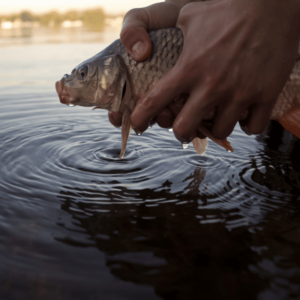
The ideal season for carp is from May until August when the sun strikes the waters where they like to hide and warms them up. This gives the fish ample sources of food as bugs and buds come into bloom and the fish tend to idle in the warmer, shallow water making them easy to spot.
After the summer feeding frenzy, carp tend to have dedicated feeding patterns by the time fall rolls around. If you’ve made a study of their feeding habits and the places where they like to hunt, you can drop your fly into their path and bag a big one!
While the paths for feeding may be established, as fall cools down there’s less food to be found so carp get a little more desperate. Be patient and wait around for them to catch on to your fly. Their patterns are established and things are beginning to get desperate for them to feed so you can pull in several throughout a whole weekend.
The same tips and tricks are needed in the fall as well as the summer: be patient, stalk your carp, and be ready for them to pull hard once you get one on the hook!
Fly Fishing for Carp in the Winter
Spending the day out on the lake, pond, or river when it’s sunny and warm sounds like an excellent way to spend a day regardless of whether you pull any carp out or not! But if you’re serious about fly fishing for some carp, grab your heavy coat and some mittens and head out during the winter.
To pull carp from the water when it’s winter it all becomes about location. Fish are moving slow and if they move much at all it won’t be far from a quality food source. Do your research and scout out the places where food sources are more abundant like weed beds or shallow areas of the lake.
As you’re fishing in the winter, keep your bait going in little and often to get the carp’s attention. Once you’ve located a good location where the fish like to gather, you’ll be able to pull them out in quick succession. The fish won’t go far during the cold months from what they perceive as a good source of food and that’s all the more to your advantage.
Fly Fishing for Carp in Muddy Waters
Not every lake, pond, or river is going to have pristine waters that will allow you to track your quarry. When you encounter muddy waters on your next fly fishing expedition, there are several things you can do to ensure you still get your shot at some serious carp.
Find the clearest area on your body of water that you possibly can. Then turn to a trusty black fly that will catch even a small amount of light and thus catch the carps eye. Make sure that this fly is light so it has more time between landing on the water and sinking to the bottom for the fish to see it move.
Choose the shallowest area of the waterway possible. Carp love the sun and they’re often found in shallow areas of muddy waterways because they are very light sensitive and prefer to feed where they can feel the sunshine.
Fly fishing for carp in muddy waters may require you to put on your detective cap before you even cast a line. Look for small indicators like tiny wavelets that show carp are feeding under the surface or a stream of bubbles as they free methane from the bottom of the lake. When enough of them are gathered together, the muddy water may even become clear.
Keep your eyes open and don’t let the type of waterway or the dirtiness of the water discourage you!
